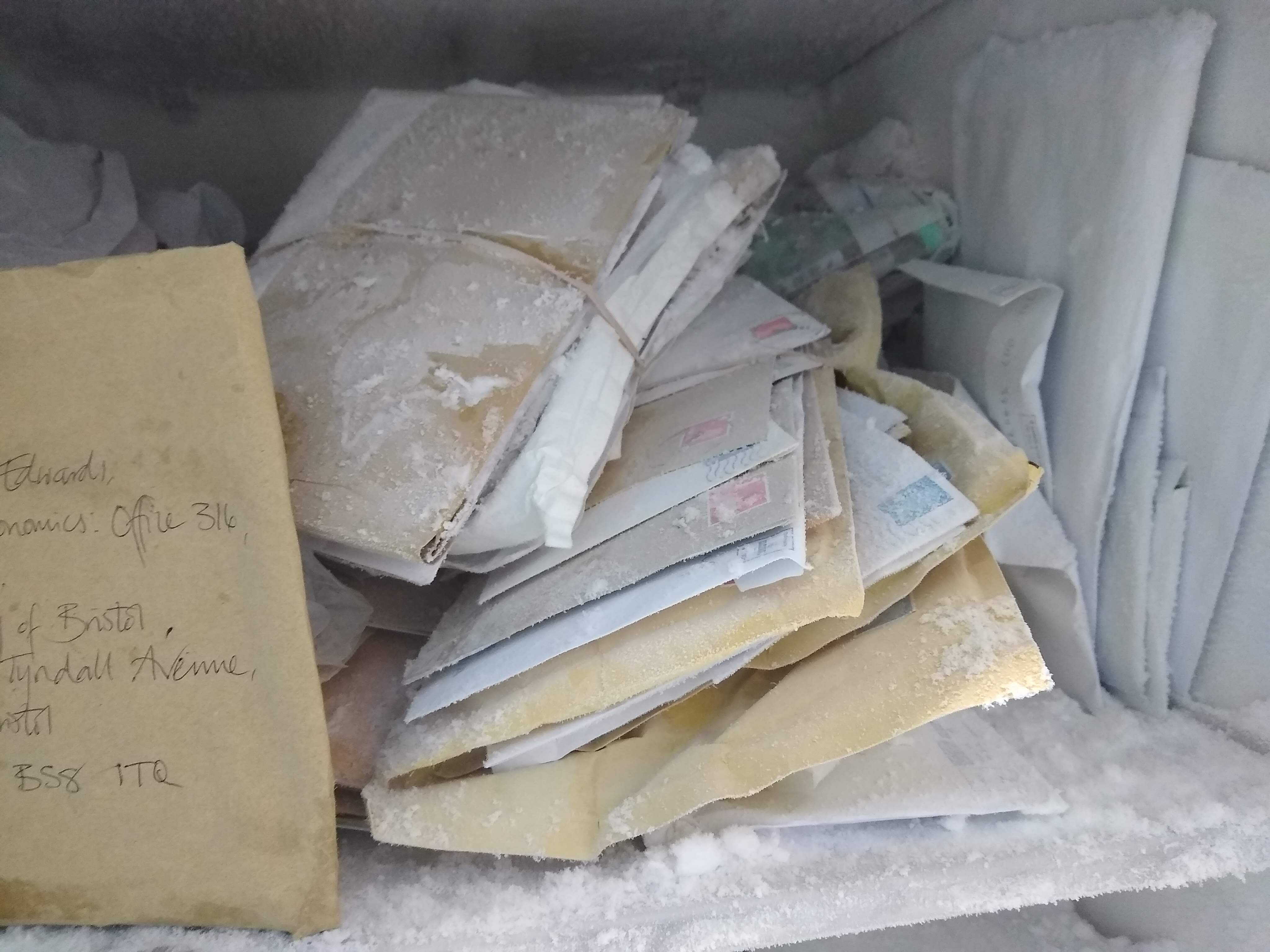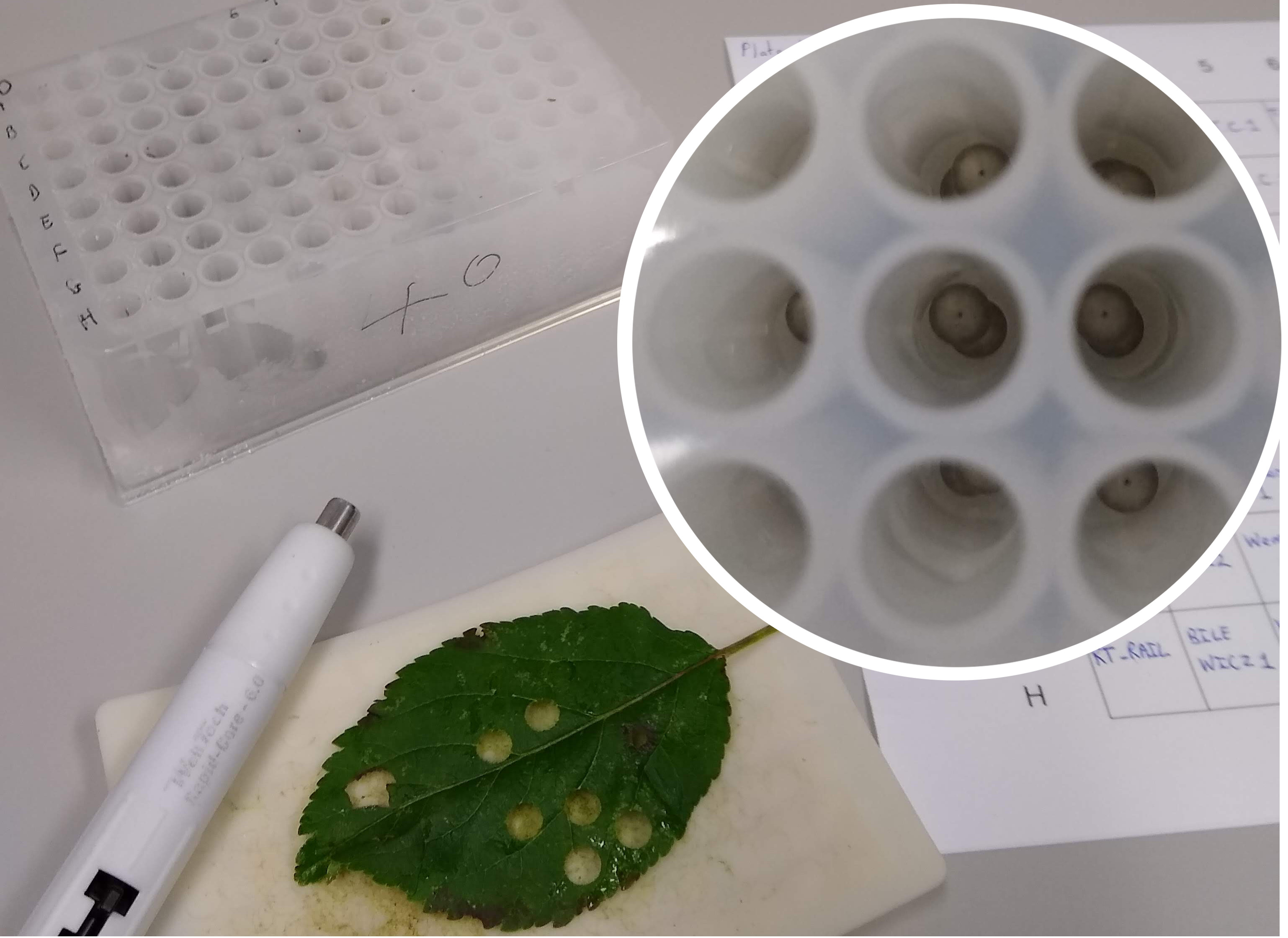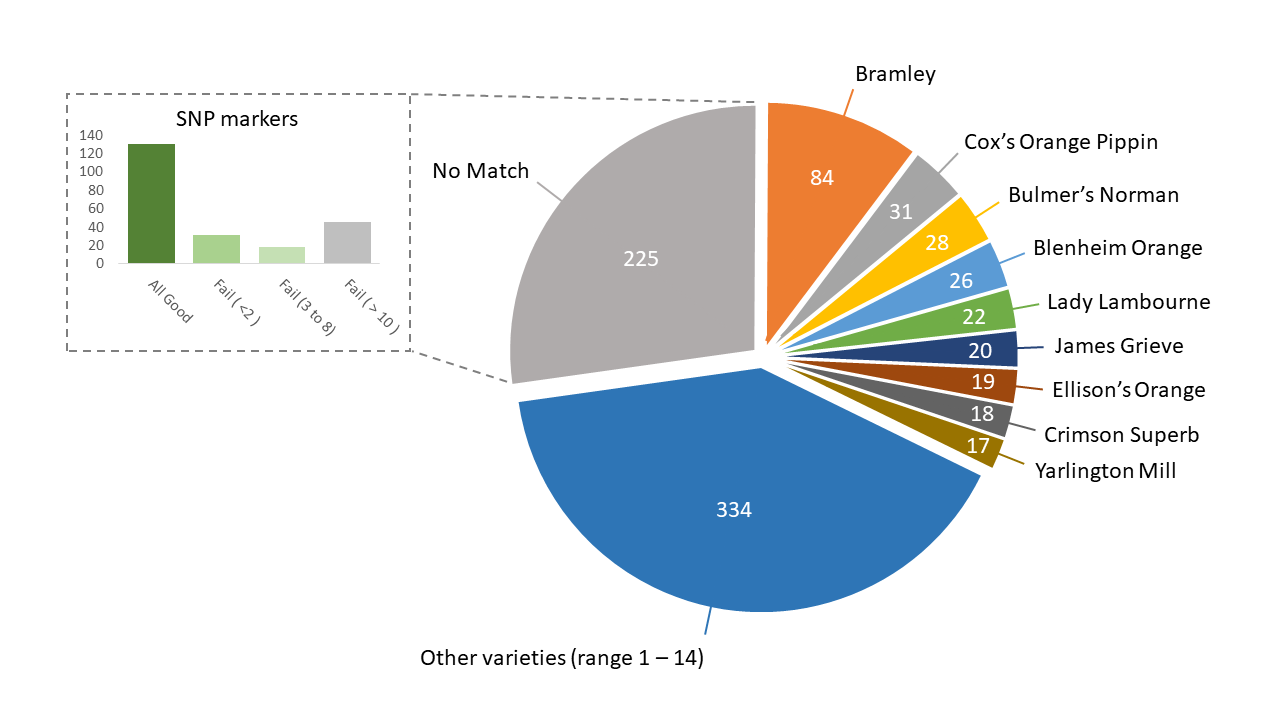Cider Apple Hunt

A big thank you to all those who have sent in apple leaf samples; we received 824!. We have now genotyped ('fingerprinted') all of these samples and the results are available (see below).
Check your codes and see results
To see the results for your apple trees, in the box below, enter the codes you gave them and hit 'Submit'. Can't remember the code? Enter just the first few letters or numbers; e.g., entering the letters 'MA' (case insensitive, so 'ma' also work) returns 'MALT05WE04' and 'MARS'. Similarly, entering the number '7' returns '7', '7462' and '7Mint'.
How samples were gentically 'fingerprinted'

On arrival, all the letters and parcels containing leaf samples were placed in a large, -80 ℃ freezer. The letters and parcels were removed briefly from the freezers and small amounts of leaf tissue were transferred to special 96 well plates ready for DNA extraction: that is, six 7 mm leaf discs from each sample have been placed in one of the wells that also contains 2 small ball bearings (see image). The 96 well plates containing the leaf discs were kept in the freezer ready to await the next stage; DNA extraction.
Extraction of DNA. The 96-well plates, while it is still very cold having just been removed from the freezer, were placed into a machine that shakes them violently for 3 minutes; the ball bearings in the wells act to grind the samples into a fine powder. The powder in each well was then treated with a series of chemical solutions that help to break up the cells and help separate the DNA from all the other cellular material (proteins and carbohydrates)
In order to give a name to your samples, we compare their genetic 'fingerprints' with those of over 1,500 that we have in our database; these are mainly derived from apple accessions maintained in the National Fruit Collection at Brogdale in Kent.

We were able to find a match to samples in our database for 599 of the 824 codenamed samples received (see bar chart). We identified 139 different apple varieties. The most common variety sent to us was Bramley Seedling (84 codenamed samples) followed by Cox's Orange Pippin (31 samples) and Bulmer's Norman (28 samples). Most of the varieties, however, were found only once or twice (e.g., Annie Elizabeth, Christmas Pearmain, George Cave).
Unfortunately, more than 25% of the codenamed samples did not have a match to any of the varieties in the database. A small number of these had 'No Match' (see bar chart, above) because the 'fingerprinting' failed (some of the leaf samples arrived in a poor condition and, probably, gave rise to very poor quality DNA). However, the majority of the samples that had 'No Match' had perfectly good 'fingrprints'. These are either:
- varieties we haven't studied in the past so that we have no matching 'fingerprint'
- seed grown trees and so will have unique 'fingerprint' (see 'Johnny Appleseed's Gamble')
